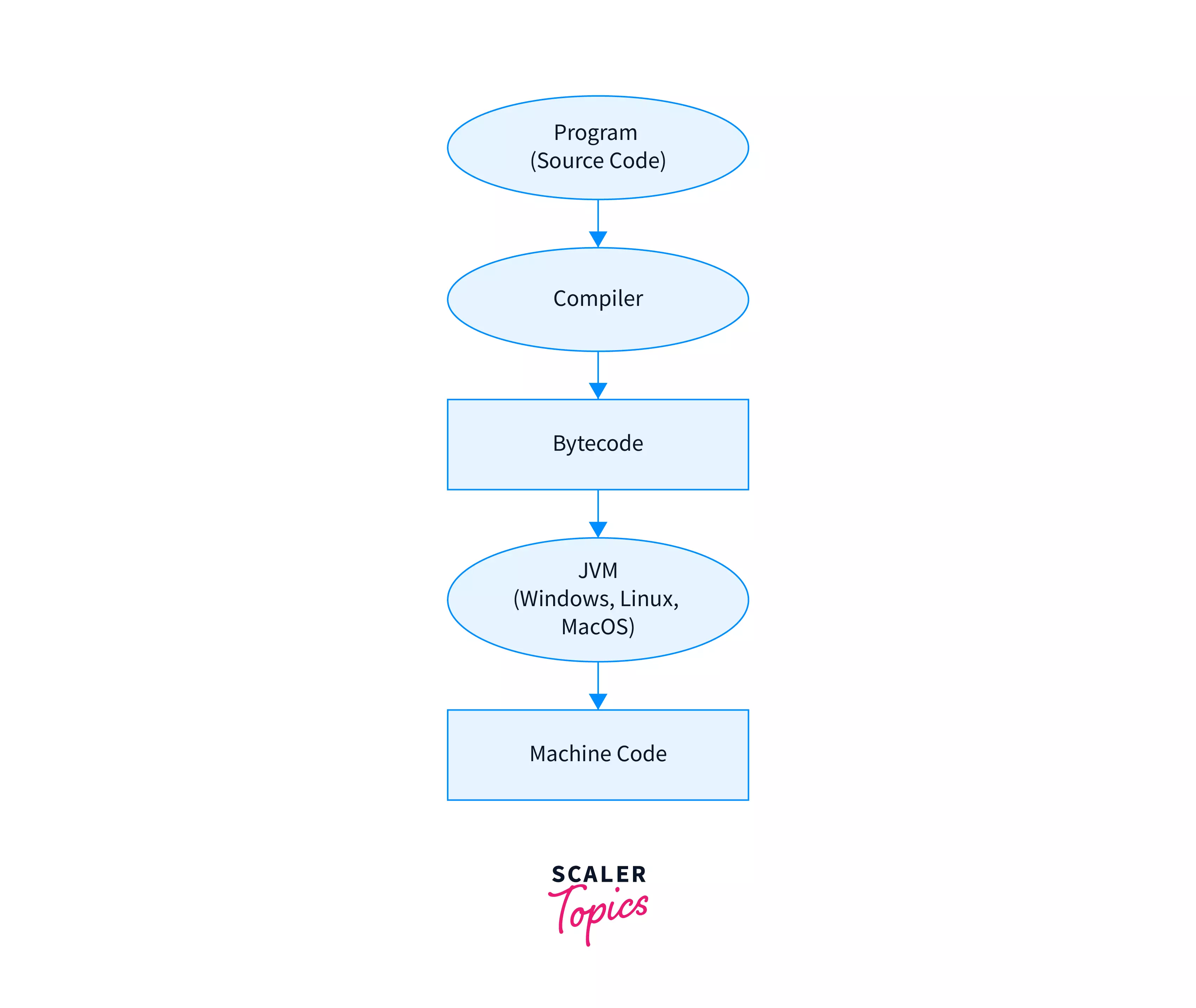What is Bytecode in Java

Overview
Bytecode in Java is a set of instructions for the Java Virtual Machine that is responsible for interpreting them. Upon compiling a Java program, Java bytecode is generated that can be executed on any platform (platform-independent) using the JVM. It is present in a .class file.
What is Bytecode in Java?
Can you imagine a world where we have to write code multiple times for each device with varying specifications like operating system, processor architecture, etc.? It will be a tedious process. Keeping these things in mind, Java developers came up with the concept of Write Once Read Anywhere, which got incorporated as a feature in the Java language. To achieve this, a code known as bytecode gets generated after compiling our Java source code. We will now discuss the same.
Bytecode in Java is a set of instructions for the Java Virtual Machine. Java Virtual Machine, abbreviated as JVM, enables a computer to run code written in Java. When a Java program is compiled, the bytecode gets generated. It is equivalent to the assembler in C++.
Bytecode is a platform-independent set of instructions primarily because it is interpreted and executed by the JVM. Code that runs on multiple computer architectures without any modification is called machine or platform-independent code.
Bytecode lies in-between low-level and high-level sets of instructions. Since we write our code in a high-level language, it gets compiled into bytecode, and later, JVM interprets it into machine code, a low-level set of instructions ready to be executed. Hence, we call bytecode a code between low-level and high-level language.
Fact:
Java is a compiled and interpreted language, unlike most other languages, which are either compiled or interpreted.
How does it work?

Let us understand the above process with an explanation:
- The code we write in Java is called the source code, which is written in a high-level language. A high-level language is a programmer-friendly language with statements written in English and is closer to human languages. The extension of the Java file is ".java".
- When we compile the program, the compiler compiles the ".java" file and generates a ".class" file. It contains the bytecode.
- The bytecode allows us to run the ".class" file on any other platform.
- But this bytecode requires an interpreter to execute it. Here the JVM comes into the picture. JVM has an interpreter. It executes the code piece by piece, i.e., one statement at a time, until it finds an error or is done with executing the end of the code.
Hence, bytecode is said to be between low-level language and high-level language.
Let us look at an example-
Suppose you have written the code in Java for a calculator app. This is how we can easily understand the way it gets processed.

Advantages
Platform Independence
Java project was started with the purpose of running the same piece of code on any device without any modifications. This concept of bytecode in Java helps in achieving this goal. Bytecodes can be different for different systems, but they are interpreted and executed by the JVM on all systems alike.
Bytecode is essentially the machine-level code that runs on the Java Virtual Machine. Whenever a class is loaded, it gets a stream of bytecode per class method. Whenever that method is called during the execution of a program, the bytecode for that method gets invoked. Javac not only compiles the program but also generates the bytecode for the program. Thus, we have realized that the bytecode implementation makes Java a platform-independent language.
Portability
It helps to add portability which ensures that the code can run on a variety of devices. This resonates well with the saying "write once, run anywhere" principle implemented by Java. We also don't need to write the code again on any other device.
Disadvantages
- The bytecode cannot run without an interpreter or JVM. If any device doesn't have JVM, bytecode won't run on that device.
- It is difficult to analyze the bytecode as it is in the form of binary and not understandable by humans.
Conclusion
- Bytecode in Java is a set of instructions for the Java Virtual Machine.
- Bytecode is a platform-independent code.
- Bytecode is a code that lies between low-level language and high-level language.
- After the Java code is compiled, the bytecode gets generated, which can be executed on any machine using JVM.
- When we compile the program, the compiler compiles the ".java" file and generates a ".class" file.
- The bytecode needs an interpreter to run it; hence, JVM acts as an interpreter.
- Java is both compiled and interpreted.
